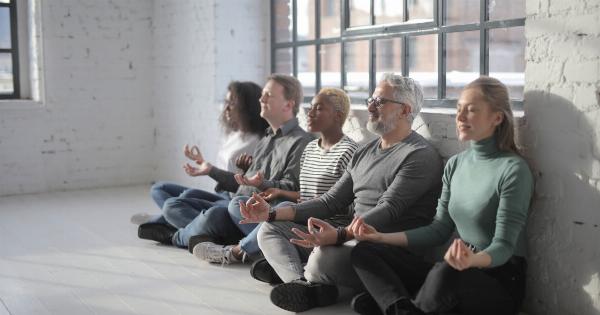With increasing demands and pressure in the workplace, stress and anxiety have become common phenomena among employees. While there are various ways to cope with workplace stress, yoga has emerged as one of the most effective solutions.
Yoga is an ancient practice that involves physical postures, breathing exercises, and meditation techniques, which can help reduce stress and promote relaxation.
The Effects of Workplace Stress and Anxiety
Workplace stress and anxiety can have a range of negative effects on employees’ physical and mental well-being. Some of these effects include:.
- Increased risk of heart disease and other chronic illnesses
- Reduced immune system function
- Sleep disturbances
- Affected mood and emotional well-being
- Decreased productivity and effectiveness at work
How Yoga Can Help
Yoga is a holistic practice that can help reduce stress and anxiety by focusing on both the body and mind. Here are some ways yoga can help:.
- Physical postures, or asanas, can help release tension and promote relaxation in the body.
- Breathing exercises, or pranayama, can help calm the mind and reduce anxiety.
- Meditation techniques can help improve focus, reduce negative thoughts, and promote overall well-being.
Yoga Techniques for Workplace Stress and Anxiety
Here are some simple yoga techniques that employees can use to reduce stress and anxiety in the workplace:.
Seated Forward Bend (Paschimottanasana)
This pose can help release tension in the neck and shoulders, which can help reduce stress and promote relaxation.
To do this pose:.
- Sit on the edge of a chair with feet flat on the ground and hands on your thighs.
- Inhale and lift your arms up above your head.
- Exhale and fold forward, bringing your chest towards your thighs. Let your hands rest on the floor or on your feet.
- Stay here for a few deep breaths, then slowly lift yourself back up.
Alternate Nostril Breathing (Nadi Shodhana Pranayama)
This breathing technique can help calm the mind, reduce anxiety, and improve concentration.
To do this technique:.
- Sit comfortably with your back straight and hands resting on your knees.
- Use your right thumb to close your right nostril, then inhale through your left nostril.
- At the top of your inhale, use your right ring finger to close your left nostril, then exhale through your right nostril.
- Still blocking your left nostril, inhale through your right nostril.
- At the top of your inhale, use your right thumb to close your right nostril, then exhale through your left nostril.
- This completes one round. Repeat for several breaths.
Mountain Pose (Tadasana)
This posture can help improve posture, reduce tension in the back and neck, and promote overall relaxation.
To do this pose:.
- Stand with your feet hip-width apart and arms at your sides.
- Press your feet into the ground and lengthen your spine.
- Bring your shoulders down and back, and relax your arms at your sides.
- Breathe deeply and hold the pose for several breaths.
Corpse Pose (Savasana)
This relaxation pose can help calm the mind, reduce stress and anxiety, and promote overall well-being.
To do this pose:.
- Lie down on your back with your arms by your sides and palms facing up.
- Close your eyes and breathe deeply.
- Relax each part of your body, starting with your toes and working up to your head.
- Stay in the pose for several minutes, breathing deeply and relaxing fully.
Conclusion
Yoga can be an effective solution for workplace stress and anxiety. By incorporating simple yoga techniques into their daily routine, employees can reduce stress, improve focus, and promote overall well-being.
Whether done before, during, or after work hours, yoga can provide a valuable tool for employees to manage workplace stress and improve their overall health.































